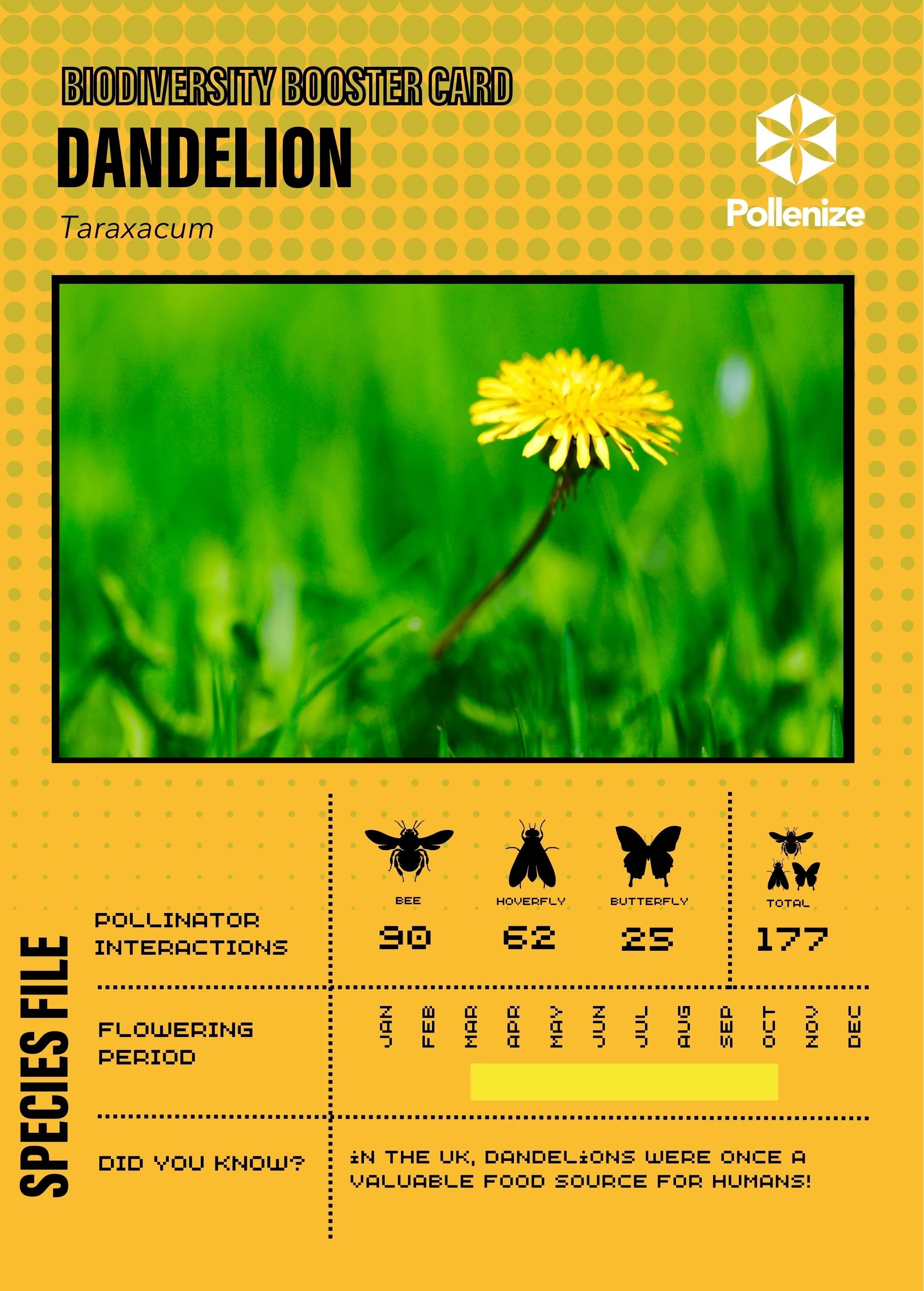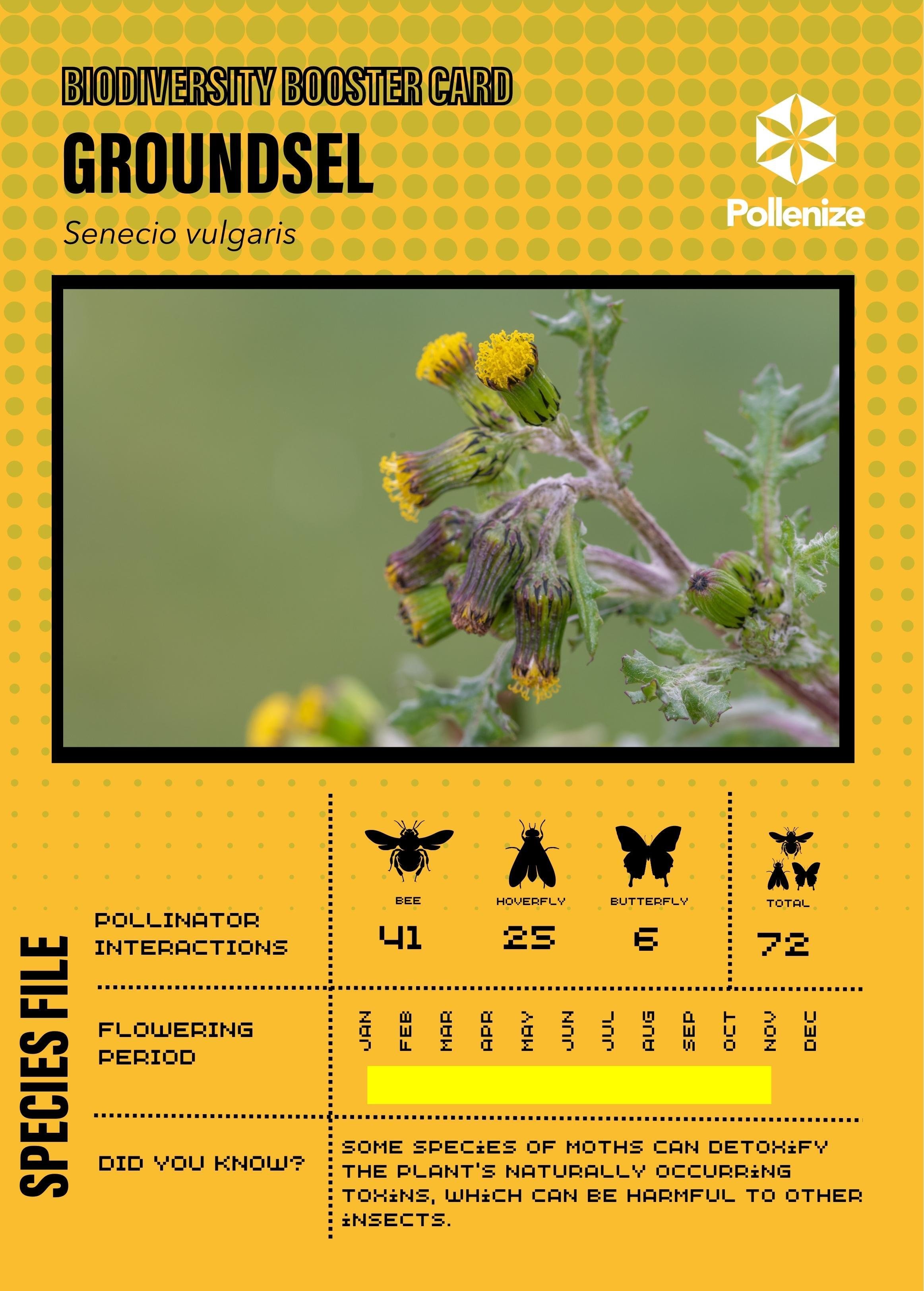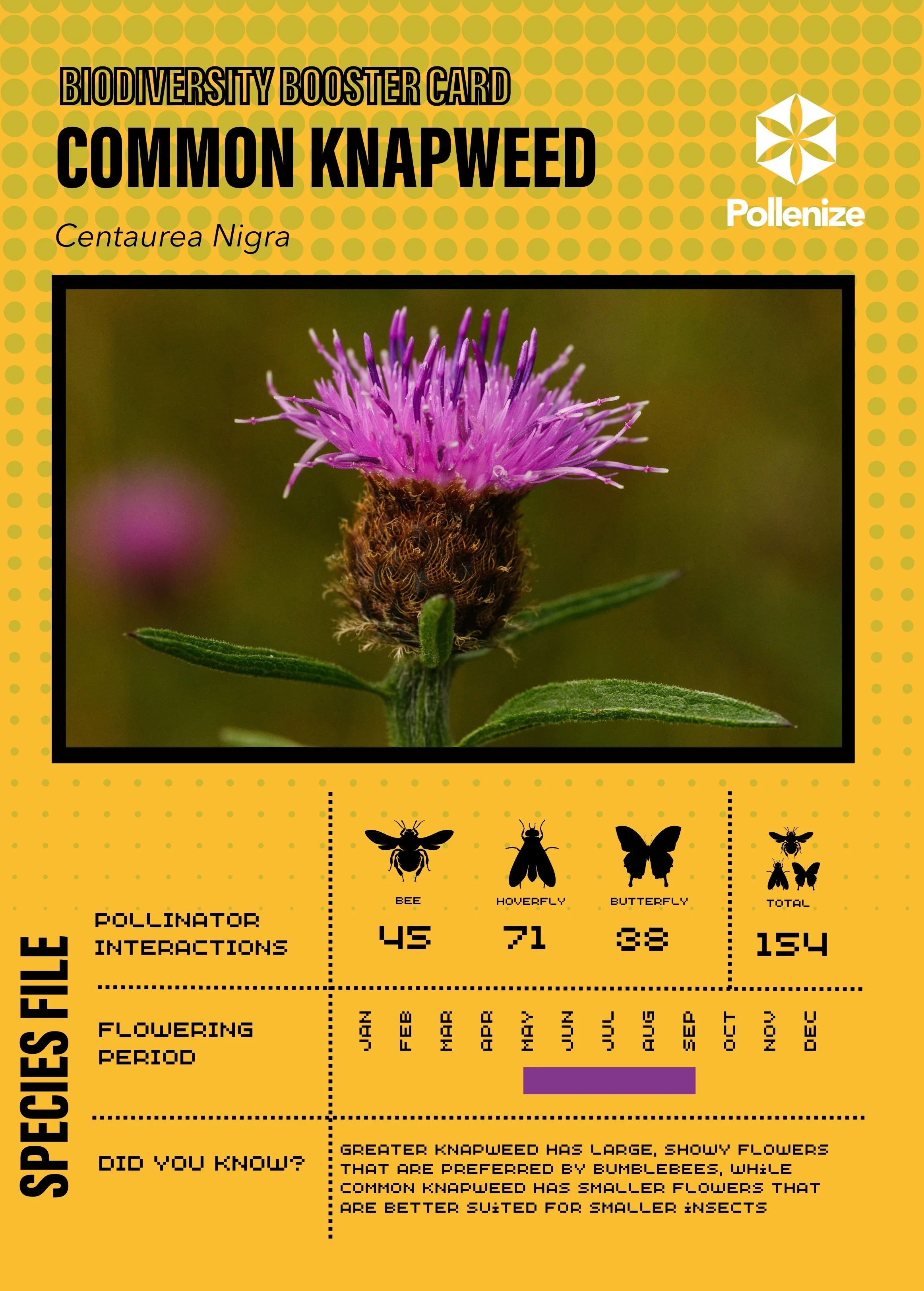Wildflowers Not Weeds!
As part of the Pollenize #pesticidefreeplymouth campaign, we’re showcasing the real value of plants that many people consider to be ‘weeds’. By spraying these wildflowers with toxic chemicals such as Glyphosate (found in popular weedkillers like Roundup), we are not only contaminating our urban environment but also removing vital food sources for a wide range of pollinating insects. Insects and pollinators are fundamental to biodiversity but are in rapid decline, with many species at risk of disappearing from areas of the British Isles - we don’t want Plymouth to be one of them.
Let’s shine a light on some plants which are often targeted by harmful chemicals… we've created a species fact file for 10 of our favourite wildflowers to show the world just how many different types of bees, hoverflies and butterflies rely on them to survive!
Co- Written by Plymouth University Student Natasha Meaden
1
Previously a vital food source for humans in the UK, dandelion plants are now mistakenly considered weeds in our gardens. Dandelions are one of the best foods for pollinators, particularly since they appear in the early spring when few other flowers are in bloom.
As they draw local bees, butterflies, moths, and birds, their presence also promotes biodiversity.
Dandelions play an essential role in the preservation of soil by functioning as a natural barrier, supplying shade, and preserving moisture. They also add a vibrant pop of colour to the dreary landscape of early spring.
2
Wildly popular with our Apiary Network bees, bramble blooms offer a source of food for bees, bumblebees, and other wild animals. A few caterpillar species, as well as several grazing animals, particularly deer, consume leaves. Many animals, including foxes and badgers, as well as tiny birds, consume ripe berries and spread their seeds.
Overall, brambles offer a combination of delectable fruit, adaptability, and ecological benefits, making them a favorite among nature enthusiasts and foragers.
3
Field Forget-Me-Nots are both attractive, being either blue, pink, or white in colour, and vital in playing an ecological role, acting as a food source for many pollinators
Forget-Me-Nots are prolific self-seeders, meaning the seeds will fall and naturally germinate, producing a naturalised show of blooms the following year.
As well as attracting a variety of pollinators, including bees, butterflies, and hoverflies, the dense foliage of Forget-Me-Nots provides shelter and habitat for small invertebrates, such as spiders and beetles, which are crucial components of the food chain.
4
The Common Ragwort, a bloom that resembles a daisy, is one of the flowers that pollinators visit most frequently in the UK with a whopping 203 potential pollinator interactions.
Several insects have evolved to exclusively feed on it , including the ragwort flea beetle and the most well-known, the cinnabar moth
Since ragwort is their only food supply and is necessary for their survival during their larval stage, the cinnabar moth really does depend on the abundance of this wildflower.
5
Groundsel, a common UK wildflower, supports pollinators and biodiversity. Its yellow flowers and feathery seeds attract bees, butterflies, and hoverflies, providing them with nectar and pollen.
Groundsel is a crucial food source, particularly in early spring when other plants may be limited. Thriving in diverse habitats like gardens, fields, and disturbed areas, groundsel remains a valuable resource for pollinators, contributing to the overall health and resilience of UK ecosystems.
6
Common knapweed, sometimes known as "black knapweed," is a plant that resembles a thistle and grows in a variety of habitats, including clifftops, lawns, and the margins of highways and wooded trails.
From May to September, it is in bloom and a big favourite of many types of butterflies, including common blues, marbled whites, and meadow browns.
The Common Knapweed is also favoured by smaller insects due to its smaller flowers.
7
The Yarrow is a wildflower that grows in North America, Asia, and Europe.
Yarrow is renowned for its delicate, flat-topped clusters of white, yellow, pink, or red blooms and feathery leaves, which allows multiple pollinators to access at one time.
It is a tough, drought-tolerant plant that may reach a height of three feet and flourish in a variety of soil types and lighting situations. By seeding it with other native plants, yarrow has been utilised as part of land restoration efforts to convert arable land to grassland.
The yarrow has a long history of usage in human medicine for conditions like multiple sclerosis, skin inflammation, wound healing, and irritable bowel syndrome (IBS).
8
In the UK, red clover is a typical plant found in a variety of grassy settings, including lawns, pastures, roadsides, and meadows. Because of its capacity to fix nitrogen, it is cultivated as a fodder crop for cattle and has long been utilised in crop rotation systems.
The nectar-rich flowers of the red clover are a favourite of many pollinator species, with interactions totalling 71. They’re also known for being the most visited wildflower by bumblebees in early spring. It is frequently used in traditional medicine as a treatment for arthritis, cancer, whooping cough, asthma, menopausal symptoms, and even whooping cough.
9
The oxeye daisy is a common grassland plant that may be found thriving in fields, hay meadows, roadside verges, and waste grounds. They go by the titles "moon daisy" and "moonpenny" because they are so dazzling that they seem to "glow" in the twilight.
The oxeye daisy's yellow core is made up of several tiny blooms that contain nectar and are used as a food source by a variety of pollinating insects, such as butterflies, bees, and hoverflies.
10
The Meadow Buttercup is a ubiquitous perennial that grows in pastures, meadows, parks, gardens, and along the margins of wooded areas. It favours somewhat moister, calcareous areas where it may grow so densely that it creates brilliant golden meadows when the sun shines. It can blooms from early spring through to October. Their bright yellow petals also act as an important cue for pollinators.
Popular with hoverflies,the presence of buttercups in meadows and grasslands provides essential resources for pollinators. In turn, pollinators play a crucial role in the reproductive success of meadow buttercups by facilitating pollen transfer between flowers.
So, as you can see, these beautiful wildflowers which are often targeted by pesticides are actually pretty amazing and support a wide range of insects vital for the food chain. Will you stand with us to put down the pesticides and stop the spray? If there is an ABSOLUTE need to remove these wildflowers … we can all find a kinder way! Please share this blog and sign our petition for a Pesticide Free Plymouth!
Sources
The Pollinator interaction information on the species file cards in this blog have been informed by the following databases on the data.gov.uk website:
Other Sources
https://www.gardenbetty.com/defending-the-dandelion-its-not-just-another-weed/
http://www.wildflowerweb.co.uk/plant/188/field-forget-me-not
https://www.woodlandtrust.org.uk/trees-woods-and-wildlife/plants/wild-flowers/bramble/
https://www.devonwildlifetrust.org/wildlife-explorer/wildflowers/meadow-buttercup
https://www.wildlifetrusts.org/wildlife-explorer/wildflowers/common-knapweed
https://www.wildlifetrusts.org/wildlife-explorer/wildflowers/oxeye-daisy
https://www.woodlandtrust.org.uk/trees-woods-and-wildlife/plants/wild-flowers/oxeye-daisy/
https://butterfly-conservation.org
https://www.devonwildlifetrust.org/wildlife-explorer/wildflowers/common-ragwort
https://www.devonwildlifetrust.org/wildlife-explorer/wildflowers/red-clover
https://www.healthline.com/nutrition/red-clover
https://www.wildlifetrusts.org/wildlife-explorer/wildflowers/yarrow
https://www.verywellhealth.com/yarrow-health-benefits-4586386
https://meadowlarkjournal.com/blog/companion-planting-yarrow












